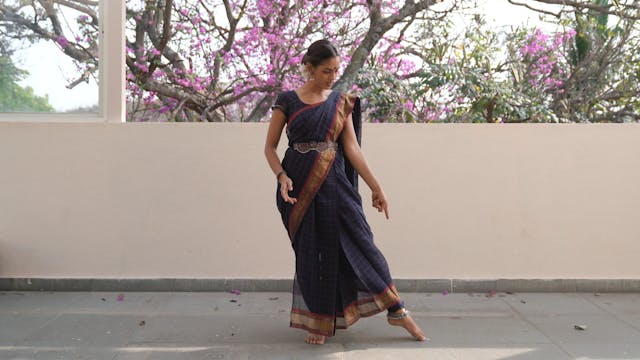Pārśva Bheda Shloka
Playlist 49
•
26s
The side, Parshva is considered one of the Angas, or major limbs according to the Natyashastra.
The movements of the side are used not only for the precise control in the execution of Nritta but also to communicate meaning in the context of gesture.
Please refer to the Shloka below for pronunciation. Please note that the separate movements of the head when put together in a Shloka form 'Sandhis', or compound words in the Sanskrit language. Words like 'ca', 'thatha', mean "and", "also". The separate words for each movement are also given below the shloka.
Natam samunnatam caiva prasāritavivartite
Tathāpasrtamevam tu pārśvayoh karma pañcadhā
Nata
Unnata
Prasārita
Vivartita
Apaśrta
Up Next in Playlist 49
-
Katī bheda Shloka
The hips are considered one of the Angas, or major limbs according to the Natyashastra.
The movements of the hips and waist are used not only for the precise control in the execution of Nritta but also to communicate meaning in the context of gesture.
Please refer to the Shloka below for pronun...
-
Pādah bheda Introduction
Explains the things to keep in mind when executing the foot movements. Please watch carefully before practising with the shloka.
-
Urō bheda Shloka
The chest or Uras is considered one of the Angas according to the Natyashastra. The movements of the chest are used not only for the precise control in the execution of Nritta but also to communicate meaning in the context of gesture.
Please refer to the Shloka below for pronunciation. Please no...


